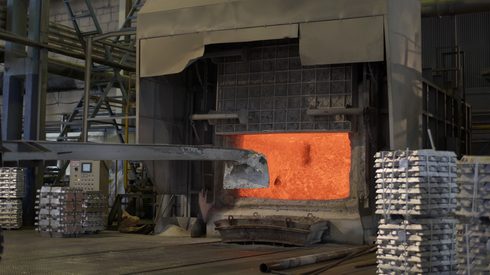How do you find out if you are taking the right amount of price risk
Here are three steps
- Run a Value at Risk (VaR) on the Fastmarkets prices that drive your costs and revenues
- Evaluate the liquidity of your business price risks
- Use this valuable information to determine the optimal price risk for your business
What is Value at Risk?
There is a simple statistical test that you can use to understand the ramifications of an unlikely event. This analysis is called Value at Risk (VaR). VaR is an analysis that can be calculated in several ways to provide you with information that can help you determine an unlikely price change or a worst-case scenario.
How do you calculate Value at Risk?
You can customize your Value at Risk calculation to fit your company exposure. There are certain assumptions that you can make to fine-tune your analysis. For example, what worst-case scenario do you want to evaluate?
There are two variables to the VaR analysis.
- How unlikely is a price change?
- What period do you want to measure?
The most common return profiles to evaluate are situations that occur only 1% and 5% of the time. Standard periods for assessment include 10-days and 20-days.
What do you need to calculate Value at Risk?
One of the benefits of having exposure to Fastmarkets prices is that you can use them to calculate your Value at Risk. There are several statistical ways to estimate these metrics. Two of the most popular are:
- Historical valuation
- Monte Carlo Simulation
A historical valuation uses a Fastmarkets time series to determine how much you could lose given a time horizon and a worst-case scenario range. Monte Carlo simulation uses the historical volatility of the time series and the correlation between multiple time series.
The criteria to run a Value at Risk includes
| Value at Risk parameters | Inputs |
| Significance in percent | 1% |
| Value at Risk in days | 10 |
| Trading days per year | 252 |
Types of simulations
| Historical simulations | Inputs |
| VAR | Historical Prices |
| CVAR |
Monte Carlo simulations
| VAR | Volatilities |
| CVAR | Correlations |
What is Conditional Value at Risk?
Value at Risk has some limitations. One of those is that it does not cover the worst-case scenarios, which occur less than 1% or 5% of the time. A statistical term called conditional VaR or CVaR handles those issues.
Determining the right capital for your VaR
The next step in determining your business risk profile is to create a liquidity multiple. This metric is customized to your business needs.
You can then multiply your VaR or CVaR by the liquidity multiple to determine the capital requirement (business size) you would need to handle the VaR of your business.
Available capital = Liquidity Multiple * VaR 10-day
If your business capital is too small to handle your VaR, you can use hedging tools to reduce your exposure.
Summary
The bottom line is that VaR is a statistical metric that you can use to help you determine the suitable price risk for your business. Trading operations use this measurement to optimize the amount of revenue they want to achieve. If your business is geared toward maximizing margins and minimizing risks, you might consider using hedging instruments to reduce your Value at Risk.
Fastmarkets can help by evaluating your firm’s price risk. The process includes analyzing the volatility of commodities your firm is exposed to and running a VaR analysis. We can then find the optimal commodity price risk for your firm.
We can show you how to reduce your VaR with hedges and describe the available products. The process will include modeling how derivative products can minimize risk exposure as we match potential commodity hedges to your purchasing and physical contracts. Additionally, we can provide scenario analysis and option pricing tools to help create an optimal hedging program. If you are interested, call to set up an appointment to discuss.




